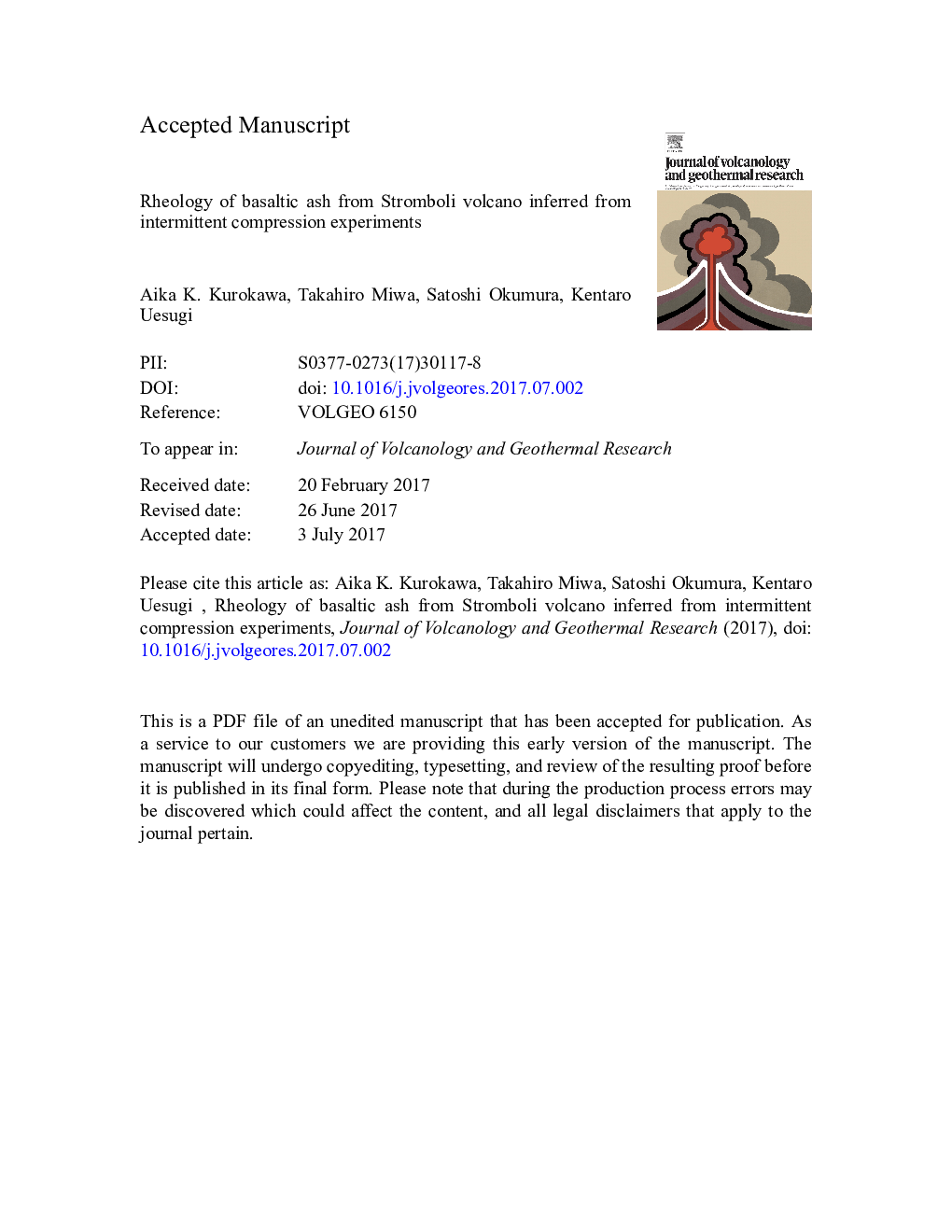| Article ID | Journal | Published Year | Pages | File Type |
|---|---|---|---|---|
| 5783698 | Journal of Volcanology and Geothermal Research | 2017 | 49 Pages |
Abstract
After ash-dominated Strombolian eruption, considerable amount of ash falls back to the volcanic conduit. By the fallback ash, the formation of a dense near-surface region is expected because it is compacted by weights of its own and other fallback clasts. The dense cap causes the gas pressure inside the conduit to increase, which promotes a forthcoming eruption. Under such conditions, the rheology of the fallback ash plays an important role in this cyclical eruption mechanism. However, little attention has been given to the point. We examined the rheology of ash collected at Stromboli volcano via intermittent compression experiments changing temperature and compression time/rate. The elastic modulus, the viscosity, and the relaxation time were estimated by a viscoelastic Maxwell model. The results show that the elasticity and the viscosity dominantly depend on the compression rate and the temperature respectively, although both of them vary with time. Thus, the ash behaves either elastically or viscously depending on the external conditions and time. The viscoelastic characteristics can be explained by magnitude relationships between the characteristic relaxation time and times for compression and rest processes. This indicates that the balance of the time scales is key to determining the rheological characteristics.
Keywords
Related Topics
Physical Sciences and Engineering
Earth and Planetary Sciences
Geochemistry and Petrology
Authors
Aika K. Kurokawa, Takahiro Miwa, Satoshi Okumura, Kentaro Uesugi,
